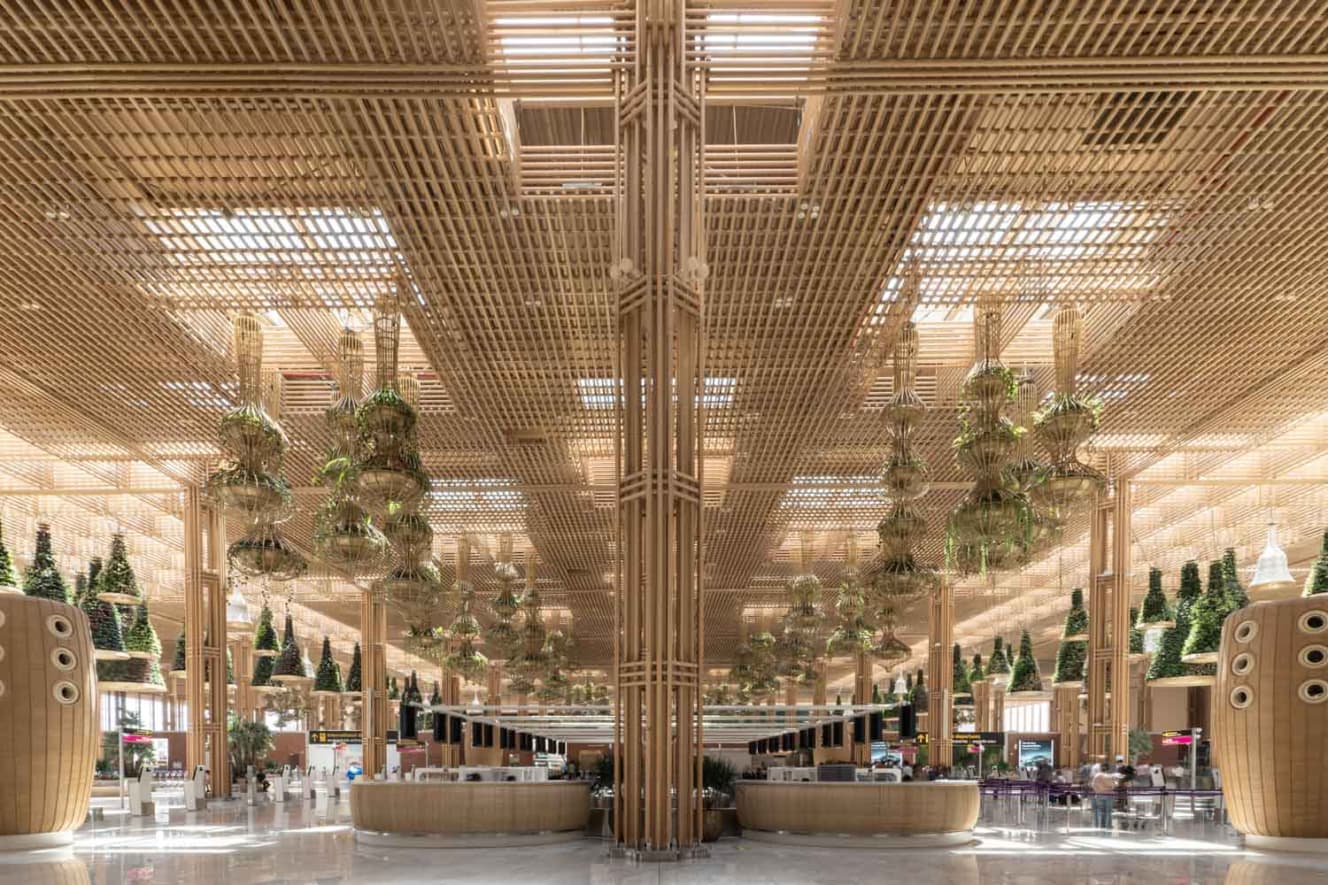India’s Kempegowda International Airport Taking Over Japan’s Proud No. 1 On-Time Departure Rate from Haneda
What is the amazing overall picture of the much-talked-about airport, Kempegowda International Airport?
When asked if there were any parts of Japanese airports that were used as references, the answer was,
“Zero.”
Hari Marar, CEO of the Kempegowda International Airport in Bengaluru, India’s third largest city, answered, “Zero”, The airport opened its new Terminal 2 this year. The new terminal, with its innovative design and state-of-the-art technology from India, an IT advanced country, is the talk of the town.
Incidentally, it is well known that India’s main subway system, including Bengaluru, was built by Japanese ODA, and Japan has been involved in the construction and expansion of many airports, especially in Asia, including Suvarnabhumi Airport in Bangkok, Thailand, and Beijing Capital International Airport in China.
India’s population has surpassed China’s to become the world’s largest (approximately 1.4 billion people).
If Delhi is the gateway to northern India, then Mumbai is to western India, and Bengaluru (formerly known as Bangalore) is to southern India. In particular, in recent years, Bengaluru, India’s third largest city, has been attracting the world’s IT companies and growing as a driving force of the Indian economy, and JAL’s Narita-Bengaluru route is in operation. As of September 2023, 24 foreign airlines and 8 Indian airlines operate flights to Bengaluru, with 25 international destinations and 75 domestic destinations.
We conducted official coverage of Kempegowda International Airport and interviewed the CEO of the airport company. We witnessed a situation that differs from what has often been seen at airports in Asia.

15 years after the opening of the airport, the number of passengers is increasing rapidly. COVID-19 crisis also “reached a new record” in cargo.
Kempegowda International Airport opened in May 2008. The airport initially had one terminal, which was expanded as the number of passengers increased. From 2019 to 2020, before Corona, the number of annual passengers exceeded 33 million, and the number of departures and arrivals reached over 230,000
.
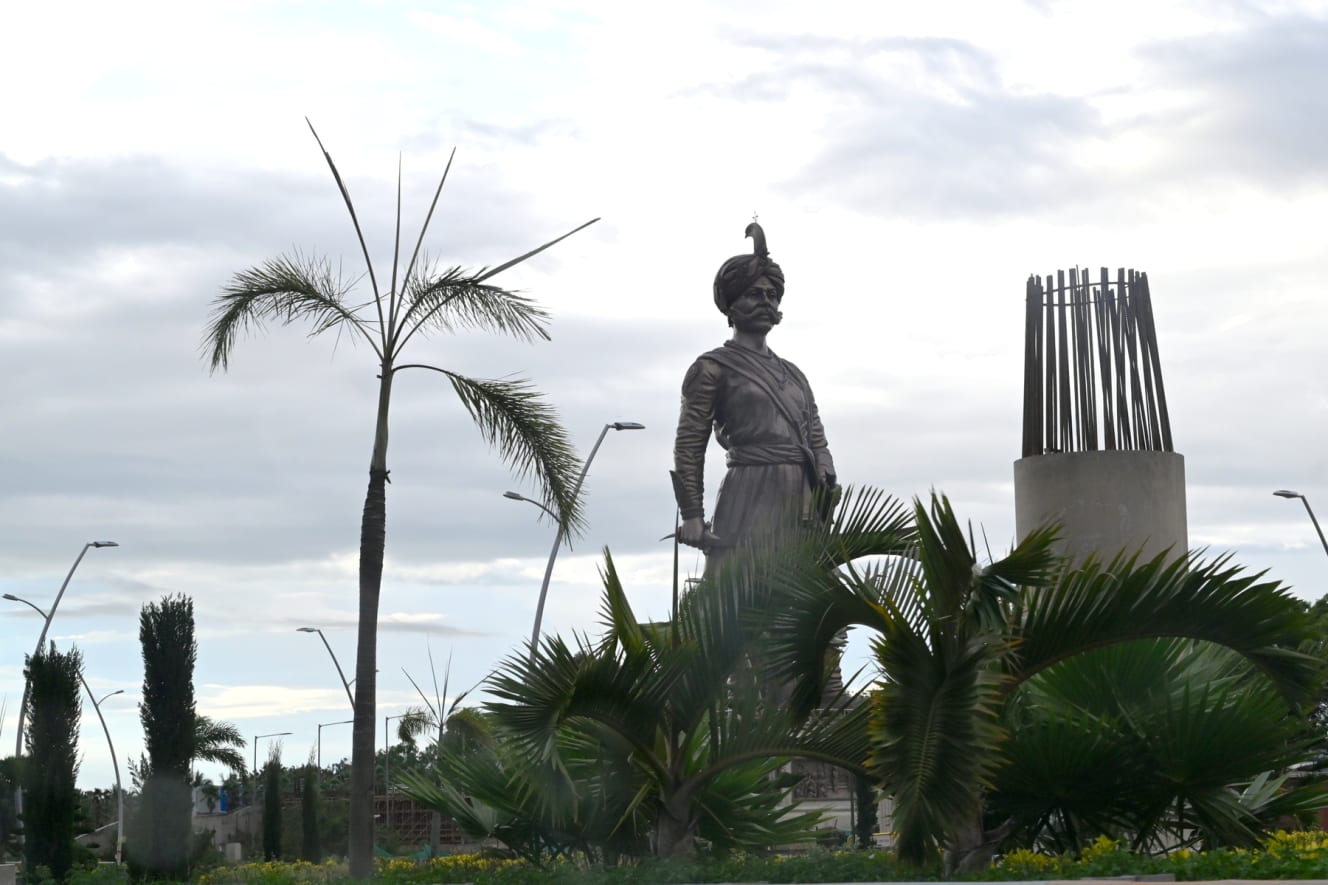 A statue of King Kempe Gowda I was visible from the car window near the airport entrance, a man known as the founder of Bengaluru as a fortified city in 1537.
A statue of King Kempe Gowda I was visible from the car window near the airport entrance, a man known as the founder of Bengaluru as a fortified city in 1537.The COVID-19 crisis also set a new record for the number of cargo handled. Incidentally, Kempe Gowda is King Kempe Gowda I, the founder of the city of Bengaluru, whose large statue towers at the entrance of the airport.
In 2023, after more than two years of construction, Terminal 2 was completed. The airport is 255,661 square meters in area, and is expected to handle 25.5 million passengers per year.
The “nature-filled” airport design is typical of the garden city of Bengaluru.
Stepping into Terminal 2, one is first overwhelmed by the luxurious and glittering design that makes it hard to believe that it is an airport. The airport says that it was designed to “enhance the passenger experience and provide a memorable visual impression,” and was based on four concepts: “garden terminal,” “environmental conservation,” “IT,” and “art and culture”.
 Domestic boarding gate area. Indian artwork is on display. The lighting design hanging from the ceiling also shows attention to detail.
Domestic boarding gate area. Indian artwork is on display. The lighting design hanging from the ceiling also shows attention to detail.
Bengaluru is located in the Deccan Plateau and is known as a “garden city” with a mild climate and abundant greenery. With as many as 600,000 plants procured from all over India and the world, including Japan, in the airport, “nature” can be felt everywhere.
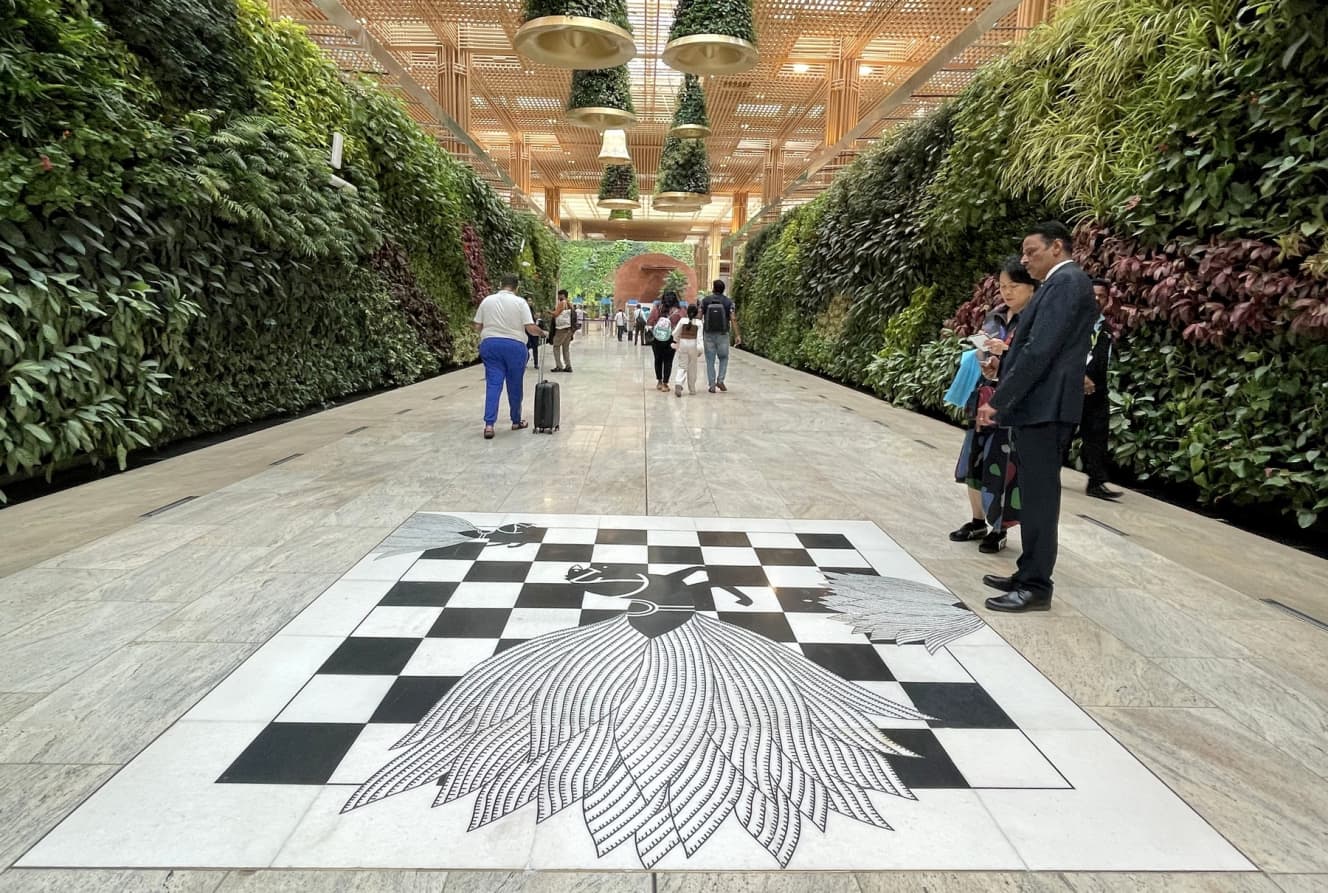
The 10,350-square-meter “Green Wall” in the corridor leading to the security checkpoint is particularly impressive. There is a 650-year-old olive tree, as well as acerola and cactus plants.
A water hose system has been installed to supply water to the plants from the ceiling in flower pots hanging from the ceiling. A nursery is located on the airport grounds for seeds and seedlings.
As a cutting-edge city in the “IT advanced country of India,” the airport is also quick to introduce the latest equipment.
Bamboo is used extensively in the terminal. These are nonflammable bamboo, which have been attracting attention in recent years as an environmentally friendly and sustainable material.
In addition, 12 rainwater reservoirs will be installed, 100% of waste at the airport will be recycled, no disposable plastics will be provided at restaurants and other places, and solar panels will be installed. These environmentally friendly initiatives have been recognized by the Airports Council International (ACI) through its Airport Carbon Accreditation, a certification system for international airports that work to reduce carbon dioxide emissions. (In Japan, Narita Airport has received Level 3 certification, while Kansai International Airport, Itami Airport, Kobe Airport, and Chubu Airport have received Level 4 certification.)
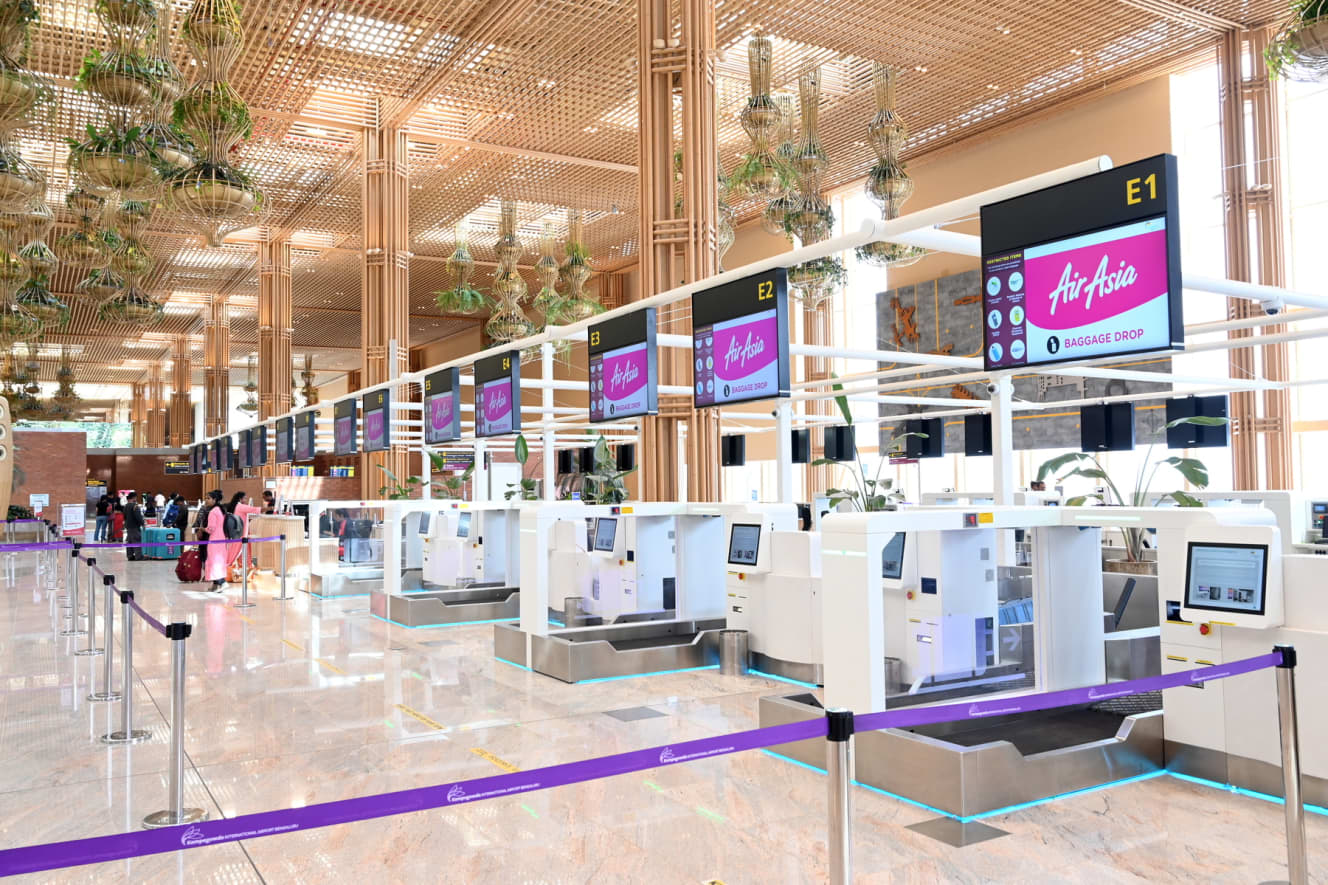 In recent years, the number of automatic baggage deposit machines has been increasing at major airports around the world, including Japan. At this airport, too, 34 of the latest devices have been installed to help ease congested lines.
In recent years, the number of automatic baggage deposit machines has been increasing at major airports around the world, including Japan. At this airport, too, 34 of the latest devices have been installed to help ease congested lines.IT is also state-of-the-art. In addition to spacious check-in counters, the airport will be equipped with 34 automatic baggage claim machines, 40 automatic check-in machines, and smart security and body scanners for security screening. The airport is also equipped with an in-line baggage handling system that can process an average of 4,500 pieces of baggage per hour, and electronic information displays are easy to understand.
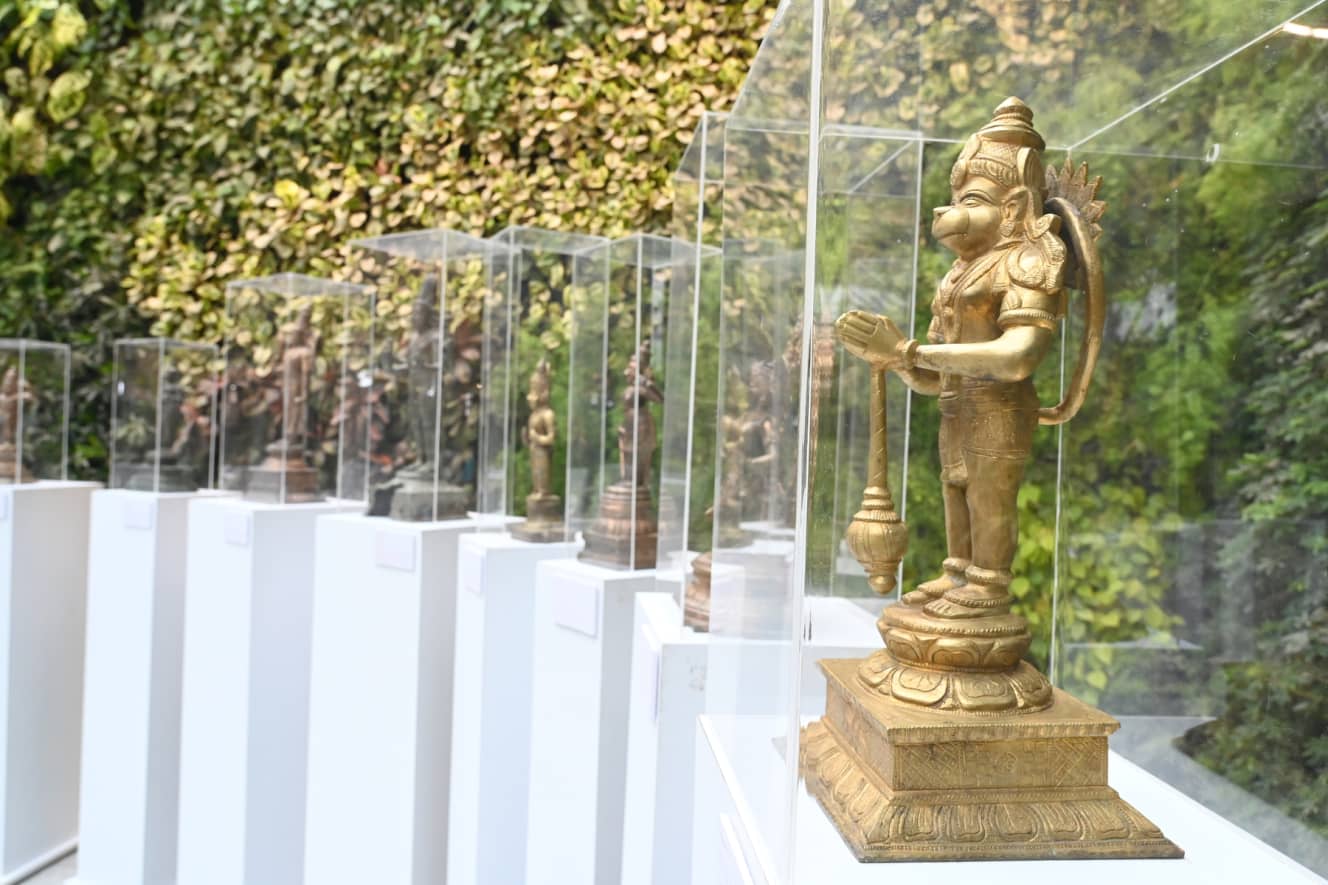 The statues of deities and other objects on loan from the Ministry of Archaeology in Karnataka. Some of the statues are from the 11th century. Exhibits are changed every few months.
The statues of deities and other objects on loan from the Ministry of Archaeology in Karnataka. Some of the statues are from the 11th century. Exhibits are changed every few months.In addition, as many as 60 works by 43 artists selected from the state of Karnataka, where Bengaluru is located, and from all over India, are on display in Terminal 2. In addition to cultural diversity, such as statues of ancient deities, some of the works include elements of modern art.
Interview with Airport CEO: “We have created an airport that can be found nowhere else in the world”
In conjunction with our coverage of the airport, we interviewed Hari Marar, CEO of the airport, who has been working at Bengaluru International Airport since 2006

Mr.Marar is proud to say, “We have created a unique terminal at the airport that cannot be found anywhere else in the world.” In particular, business use has recently returned, and travelers are increasing, especially on domestic flights, with Lufthansa’s Frankfurt and Munich routes, Qantas’ Sydney route, and Virgin Atlantic’s London Heathrow route scheduled to begin service in the near future. A convention center will be established near the airport, and the company expressed its desire to actively attract international conferences and other events to Bengaluru in the future.
Anticipating that India will continue to develop and that the number of airport users will continue to increase, Mr. Marar said, “The airport will continue to evolve for many years to come,” including the completion of a second runway, the construction of a bus gate terminal, and the extension of the subway to the center of Bengaluru. Even as Terminal 2 is finally beginning full-scale operations, he said, they are even looking at a third terminal.
In the meantime, I asked Marar if there were any airports that he used as references,
“Singapore’s Changi Airport for customer service, Switzerland’s Zurich Airport for cleanliness, and the Netherlands’ Schiphol Airport for IT,” he replied.
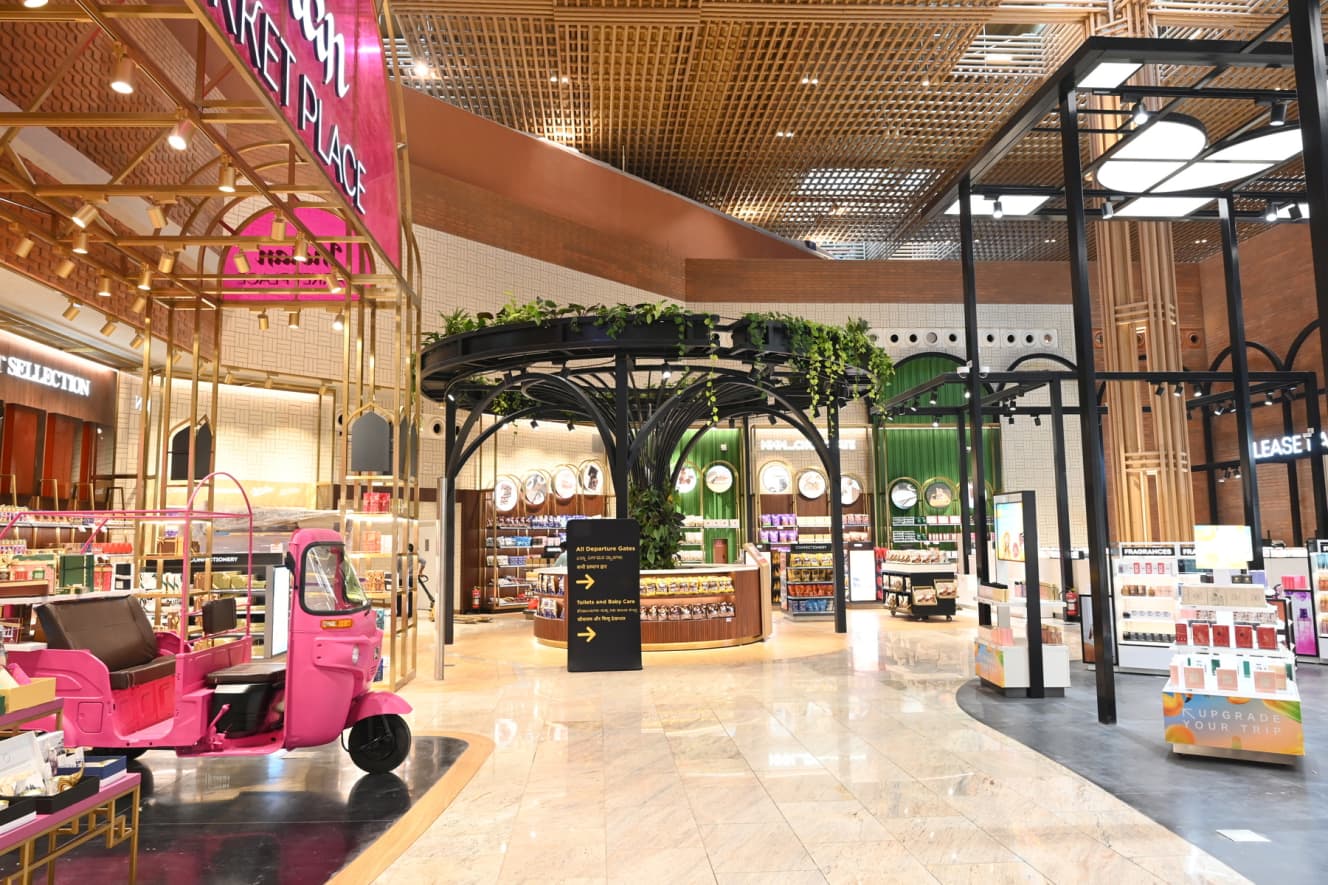

When asked why the airport’s “on-time departure rate” has surpassed that of Haneda to take the top spot.
“There is one more thing worth mentioning about this airport. According to Cirium, a British data analysis company, the airport ranked second (84.08%) behind Haneda Airport (90.33%) in the “global” category of on-time departure rates by airport in 2022. Moreover, it was No. 1 in June, July, and August of 2023, the most recent months. Haneda Airport, on the other hand, was out of the top 21 in August. The drop in the rankings of Haneda Airport and other Japanese airports is due in large part to the frequent delays caused by recent weather conditions.”
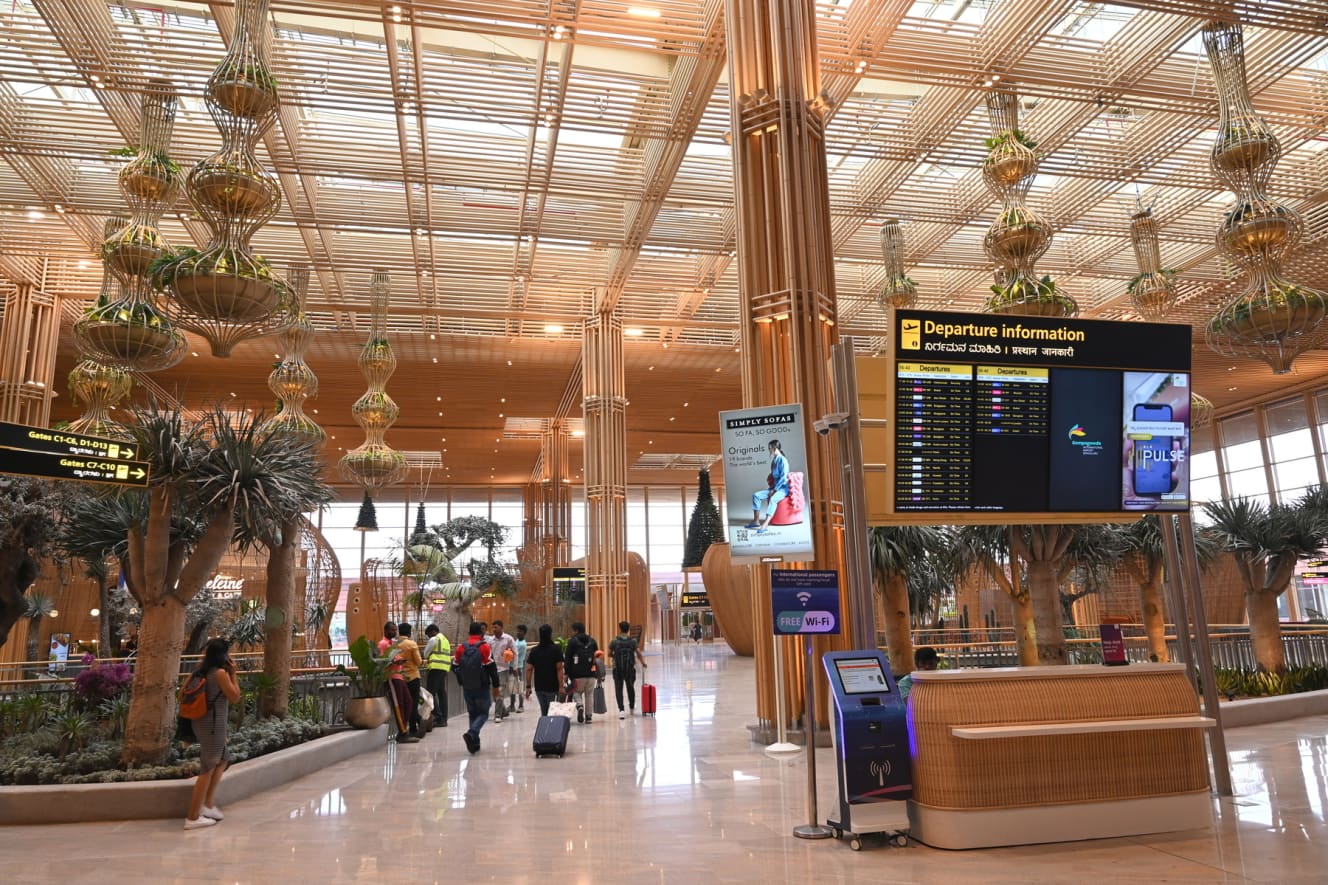
Even so, the high on-time departure rate at Bengaluru International Airport is something to be proud of. In addition to the terminal, the airport has invested a huge amount of money and installed South India’s only “CAT III” (*) on the runway. According to Mr. Marar, “The cooperation between the airport, airlines, and all other staff involved in flight operations has contributed greatly to our top on-time departure rate.”
CAT III: A category of precision approach and landing with a minimum height of resolution and runway visual range (RVR) for each category.
Airport coverage made me realize “India’s underlying strength and future potential” that can surpass China
This was the first time in my life to visit India. I entered the country through Terminal 2 and departed for Delhi on a domestic flight with Vistara Airlines from the same Terminal 2. Walking through the still new terminal from the time of its arrival, I saw many areas under construction, but it is also “India” to start operations before everything is completed. During the daytime, when there are few international flights, the sound of construction was especially loud, and new stores and other facilities were being built at a rapid pace.
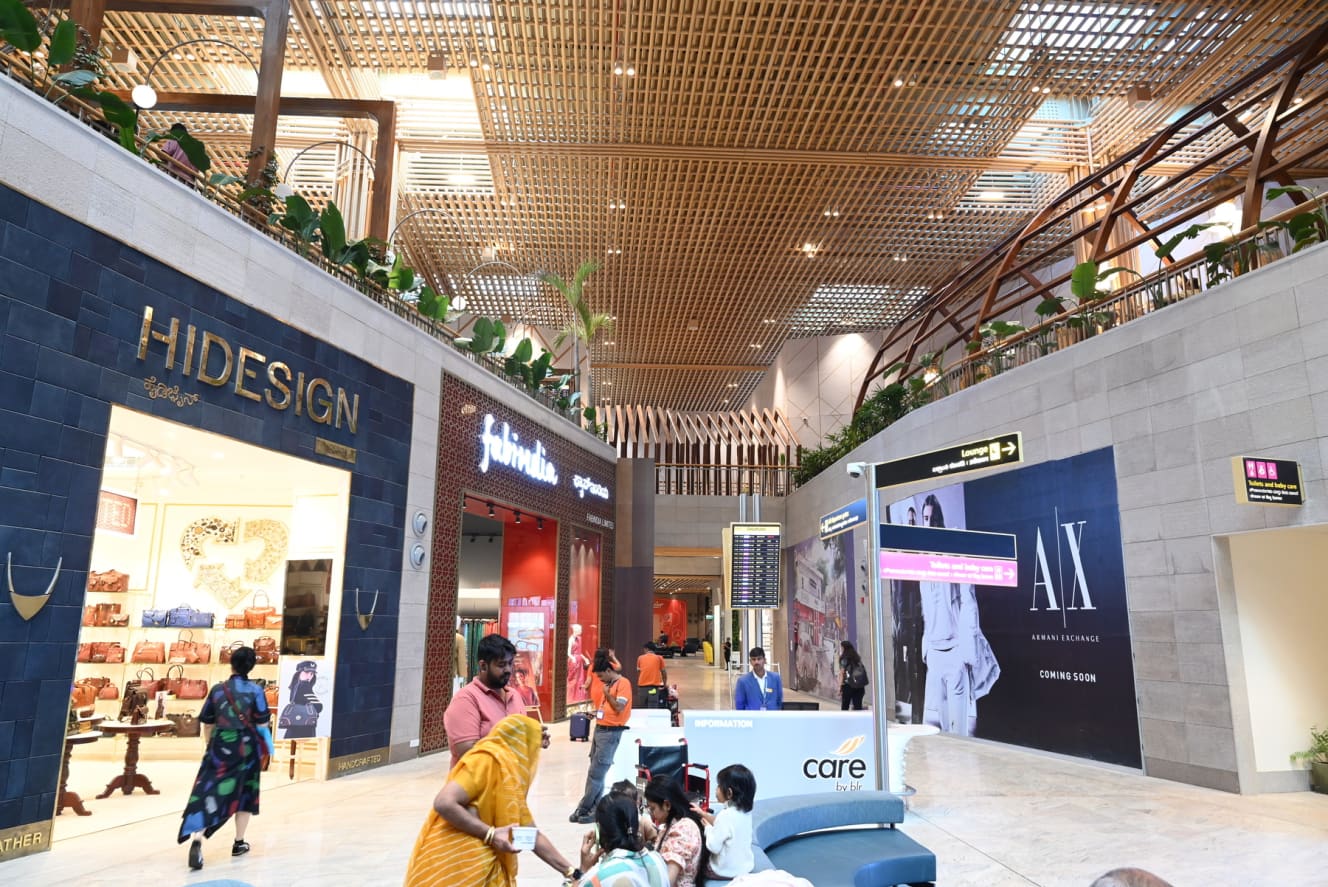 The domestic departure area also has many restaurants, cafes, and stores, as is typical of India, which has an abundance of domestic flights. There is one domestic and one international lounge after the security check.
The domestic departure area also has many restaurants, cafes, and stores, as is typical of India, which has an abundance of domestic flights. There is one domestic and one international lounge after the security check.Even so, the new terminal was magnificent. I am looking forward to seeing how these trees and other still-developing parts of the airport will grow in 10 to 20 years’ time. I had an image of India as being crowded and chaotic, but that image changed drastically at this airport. The systems we used for boarding and other procedures were all up-to-date.
 Ceremony held on September 12, 2013, when all international flights started arriving and departing at Terminal 2 (PHOTO: Bangalore International Airport)
Ceremony held on September 12, 2013, when all international flights started arriving and departing at Terminal 2 (PHOTO: Bangalore International Airport)To be honest, I was surprised that Mr. Marar, the airport CEO, did not ask me what aspects of Japanese airports were used as references. However, if one thinks about it, all of the Asian airports that ODA has worked on are highly functional, but their designs are all very similar and can hardly be said to be distinctive. Incidentally, Beijing Capital, Shanghai Pudong, Xi’an Xianyang, and Lanzhou Zhongchuan in China are airports related to Japanese ODA.In particular, many of these airports have only installed signs depicting the local area to give the airports a local flavor. In the end, I felt that India’s ability to build a great airport without the help of Japan, such as ODA, was also demonstrated.
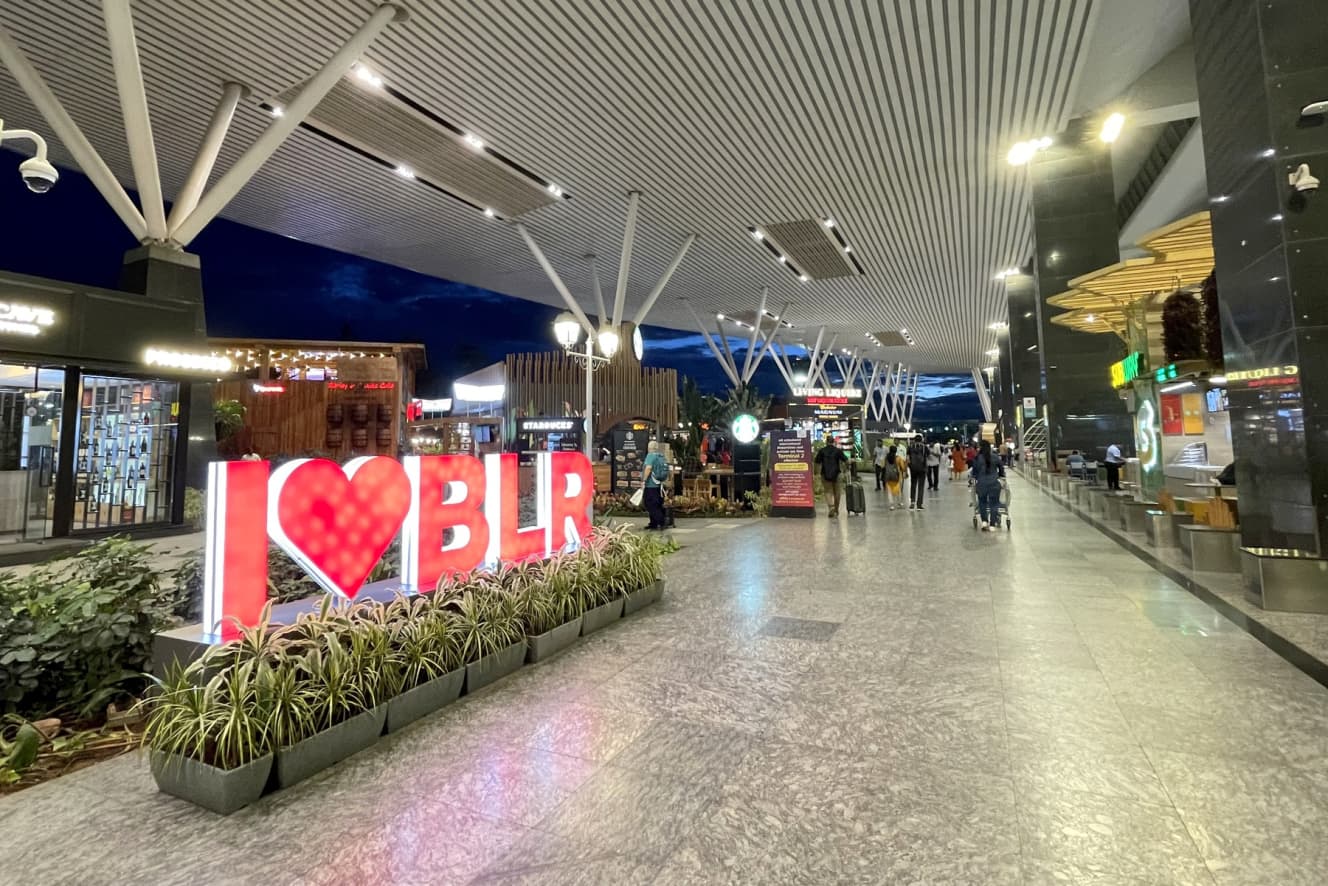 The other terminal, Terminal 1, has plenty of food and beverage facilities in the general area. Outside Terminal 2, there are also many areas currently under construction.
The other terminal, Terminal 1, has plenty of food and beverage facilities in the general area. Outside Terminal 2, there are also many areas currently under construction.India, which has surpassed China in terms of population, has always had strong manpower. At the Paris Air Show this year (2023), India’s two major airlines placed large orders for a total of over 1,000 aircraft from Airbus, Boeing, and other airlines. Demand for air travel will undoubtedly increase as the population grows, and it will be interesting to see whether India will become a world leader in airports in the future.
Interview, text, and photos (unless otherwise noted): Aki Shikama
